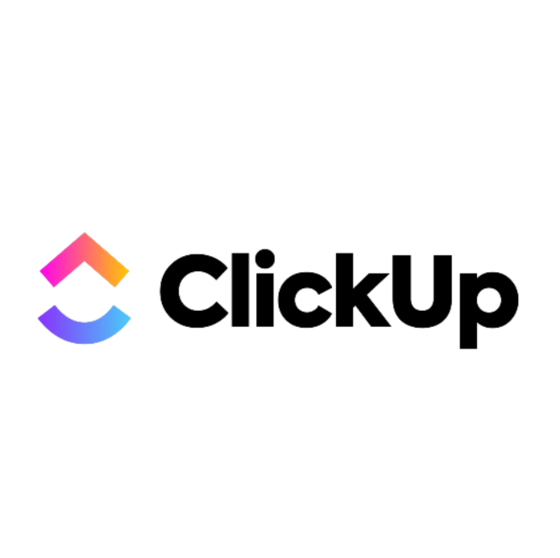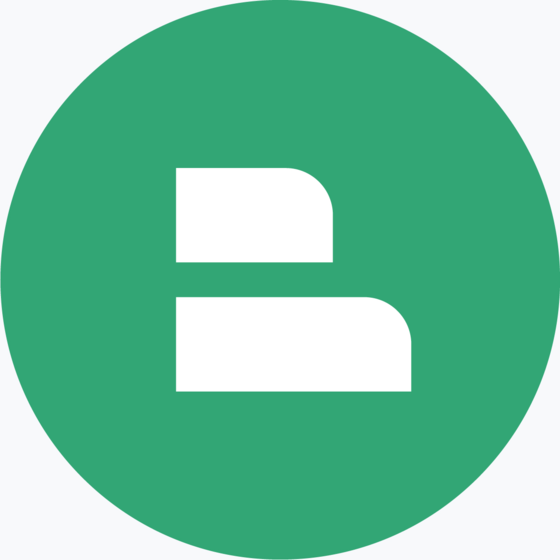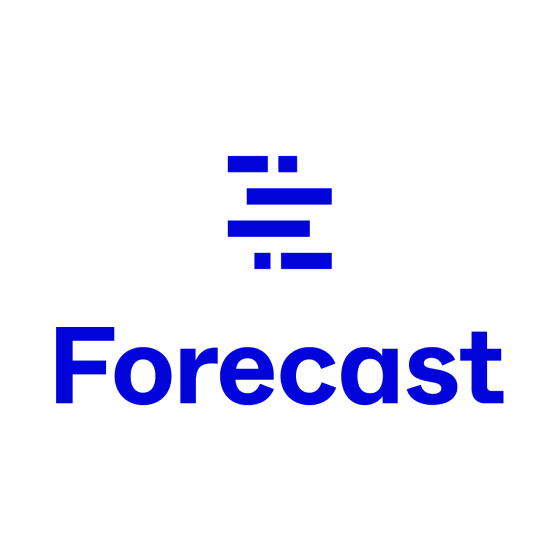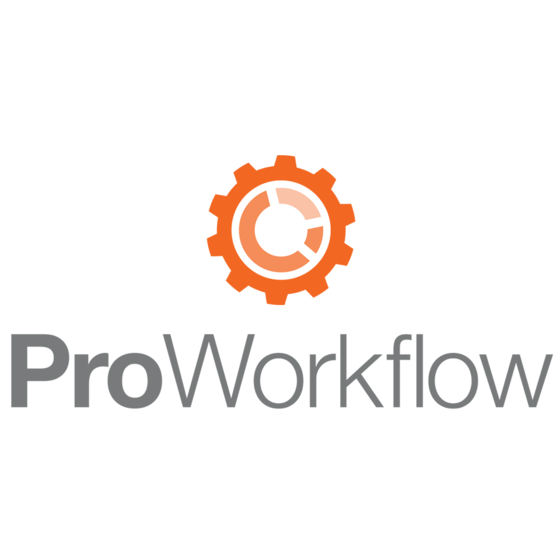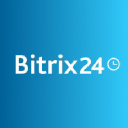Best Resource Management Software for Small Teams Shortlist
Here’s my pick of the 10 best software from the 20 tools reviewed.
Get free help from our project management software advisors to find your match.
Resource management can be overwhelming for small teams. You may often encounter issues like overbooking or scheduling complexities and need a solution to effectively allocate and track resources tailored to your team's projects. I've got you covered! In this post, I'll leverage my expertise in project management to share recommendations for the best resource management software for small teams.
Here, you'll find top tools that provide a centralized platform for workload and resource management to enhance visibility into allocation while improving efficiency.
Why Trust Our Software Reviews
We’ve been testing and reviewing project management software since 2012. As project managers ourselves, we know how critical and difficult it is to make the right decision when selecting software.
We invest in deep research to help our audience make better software purchasing decisions. We’ve tested more than 2,000 tools for different project management use cases and written over 1,000 comprehensive software reviews. Learn how we stay transparent & our software review methodology.
Price Comparison Chart For Resource Management Software for Small Teams
This comparison chart summarizes basic details about each of my top selections of resource management software for small teams. You can view pricing details and the availability of free trials or demos side-by-side to help you find the best resource management software for your budget and business needs.
| Tools | Price | |
|---|---|---|
| Bonsai Agency Software | $10/user/month | Website |
| Forecast | Pricing upon request | Website |
| Hubstaff Tasks | From $5/user/month | Website |
| awork | From $8.50/user/month (billed annually) | Website |
| ProWorkflow | From $20/user/month (billed annually) | Website |
| 10,000ft by Smartsheet | From $14/user/month (billed annually) | Website |
| SAP S/4HANA Cloud | Pricing upon request | Website |
| Tempo Portfolio Manager | From $45/user/month (billed annually) | Website |
| Bitrix24 | From $49/user/month (billed annually) | Website |
| Resource Guru | From $4.16/user/month (billed annually) | Website |

Compare Software Specs Side by Side
Use our comparison chart to review and evaluate software specs side-by-side.
Compare SoftwareHow to Choose Resource Management Software for Small Teams
As you work through your unique software selection process, keep the following points in mind:
- Real-time Visibility and Utilization: Select software that offers immediate insights into how resources are allocated and used. This is vital for small teams to ensure that every team member's time is utilized effectively, avoiding scenarios where some are overloaded while others are not fully engaged.
- Project Management Efficiency: Choose a tool that streamlines project management tasks. This is particularly important for small teams that cannot afford to waste time on cumbersome administrative processes.
- Forecasting and Capacity Planning: Opt for software that provides forecasting capabilities to help predict future resource needs. This feature is crucial for small teams to maintain an optimal workforce, avoiding the costs associated with hiring too many or too few employees.
- Integration and Ease of Use: Ensure the software integrates well with other systems and is easy to use. This is essential for small teams to facilitate quick adoption and to make the most of the software's capabilities.
- Financial Management and Reporting: Look for software that includes financial management tools. Small teams need to closely monitor budgets and costs to stay profitable. A resource management tool with robust financial reporting can help a small business track project expenses, manage budgets, and make data-driven decisions to improve financial health.
Best Resource Management Software for Small Teams Reviews
Here are my detailed thoughts on each software on this list, including what they do well and best use cases for each.
Best for integrated resource, client, and project management
Bonsai is a business management platform designed to assist small teams with resource management by providing a comprehensive suite of tools for client management, project management, and financial management. Its ability to centralize essential business aspects gives small teams a convenient way to manage everything in one place.
Why I Picked Bonsai:
As a resource management software, I like that Bonsai provides a comprehensive view of time spent on specific projects and the profitability and time sheets of each team member. These features allow users to make informed decisions about resourcing needs, set capacity limits, and reallocate time where needed. You can also track budgets with billable and non-billable hours and log time off requests, which automatically syncs for more accurate resource planning.
Standout features and integrations:
Features include templates for various business functions, Kanban views for project tracking, financial performance monitoring, repetitive task automation, a client portal, assignments for team roles and tasks, and file-sharing capabilities.
Integrations include Zapier, Slack Google Calendar, Calendly, ClickUp, Trello, Google Drive, Google Sheets, QuickBooks Online, HubSpot, Gmail, Xero, and more.
Pros and cons
Pros:
- Integrates essential business functions in one place
- Easy-to-use client portal
- Automates repetitive tasks
Cons:
- Utilization and capacity reports only available on higher-tier plans
- Mobile app is limited
Forecast is a comprehensive resource management and project planning software designed to help teams streamline their workflows, optimize resource allocation, control budgets, measure team capacity and improve project outcomes.
Why I Picked Forecast:
I chose Forecast because its AI-driven functionalities differentiate it from other resource management tools. Its ability to provide intelligent insights and automate planning processes makes it a standout choice. I determined Forecast to be best for AI-powered planning due to its use of artificial intelligence to assist with accurate forecasting and resource allocation, which is crucial for small teams looking to maximize efficiency.
Standout features and integrations:
Features include AI-powered automation, an interactive dashboard, resource scheduling calendar, detailed project planning tools, financial tracking, and collaboration tools
Integrations include Jira, Asana, Trello, Slack, Google Calendar, Harvest, Zapier, GitHub, Bitbucket, and Salesforce.
Pros and cons
Pros:
- Predictive capabilities for better workload management.
- Intelligent resource allocation to maximize team efficiency.
- AI-driven features for improved project planning.
Cons:
- Absence of specific pricing details for different tiers or requirements.
- Lack of detailed information on native integrations.
Hubstaff Tasks improves project management and efficiency for teams of all sizes by providing tools for assigning tasks, tracking progress, and managing workloads
Why I Picked Hubstaff Tasks:
I selected Hubstaff Tasks for the list because it uniquely merges agile project management with time tracking, distinguishing it from other resource management software. I believe Hubstaff Tasks is the best for integrated time tracking as it enables teams to manage tasks and track time spent on each task within the same platform, offering a clear view of work progress and resource use.
Standout features and integrations:
Features include Kanban boards, sprints, and automated stand-ups, which are essential for Agile project management. The time tracking functionality is a key feature, allowing for detailed task and project time analysis.
Integrations include Slack, GitHub, Trello, QuickBooks, Asana, Google Calendar, Salesforce, Zendesk, Basecamp, and Jira.
Pros and cons
Pros:
- Automated stand-ups and project timelines
- Direct time tracking on tasks
- Agile project management with Kanban boards and sprints
Cons:
- Additional cost to unlock full-time tracking features
- Requires a minimum of 5 seats
awork aims to improve resource allocation, encourage cooperation, and increase productivity to ensure project success.
Why I Picked awork:
I chose awork for this list because of its strong commitment to GDPR compliance, which is an important consideration for businesses operating within the European Union. Its adherence to data protection regulations makes it a reliable choice for teams prioritizing privacy and security. It guarantees ISO 27001-certified server locations in Europe and full compliance with EU data protection laws, providing peace of mind for users.
Standout features and integrations:
Features include a multi-project list and timeline, customizable filters, and task management with various views such as list, board, and timeline. It also offers quick actions for task creation, project process automation, and quality assurance review flows.
Integrations include Salesforce, Saasmetrix, Slack, Microsoft Teams, Zapier, Make (formerly Integromat), Shift, Personio, Google Drive, and Microsoft OneDrive.
Pros and cons
Pros:
- Provides a 14-day free trial without requiring a credit card
- Offers a wide range of features for project management, team scheduling, and time tracking
- GDPR compliant with ISO 27001 certified server locations in Europe
Cons:
- Some features such as milestone planning could be improved
- May have a learning curve for new users to fully utilize all features
ProWorkflow's devoted assistance and specialized services assure project success and client pleasure.
Why I Picked ProWorkflow:
I chose ProWorkflow for its robust feature set that caters to a variety of industries, from marketing and design to IT and construction. Its ability to provide expert consultation services makes it a valuable asset for teams seeking guidance and best practices in project management. I believe ProWorkflow is the best for expert consultation because it offers personalized support and resources that can help teams optimize their workflows and achieve scalable growth.
Standout features and integrations:
Features include project management, task management, time tracking, and resource management features. It also offers a mobile app, client and contractor access, enhanced production, backups and security, and flexible accounts.
Integrations include Xero, QuickBooks, Google Workspace, Microsoft Office 365, Salesforce, Zapier, Slack, Dropbox, Box, and Zendesk.
Pros and cons
Pros:
- Expert consultation and personalized support
- Free trial available without credit card
- Comprehensive project management features
Cons:
- Pricing may be higher compared to some competitors
- The advanced plan requires a minimum of 5 users
10,000ft by Smartsheet is a powerful resource management software for small teams, offering intuitive tools for project planning, scheduling, and resource allocation.
Why I Picked 10,000ft by Smartsheet:
I chose 10,000ft by Smartsheet for its exceptional ability to deliver clear, high-level insights into project progress and resource allocation. This tool differentiates itself by offering a visual and intuitive interface that simplifies complex project data. I believe it is best for high-level insights because it enables small teams to quickly understand project statuses and make strategic decisions about their resources.
Standout features and integrations:
Features include an interactive dashboard, a resource scheduling calendar, a project portfolio view, and time tracking. Additionally, it provides reporting and analytics for custom reports, skill matching to align team members with project needs, and capacity planning to forecast future resource demands.
Integrations include Microsoft Teams, Slack, Adobe Creative Cloud, Jira, Salesforce, Tableau, Google Workspace, Zapier, Microsoft Power BI, and Docusign.
Pros and cons
Pros:
- Flexible project planning with easy adjustments
- Detailed reporting for resource allocation and utilization
- Intuitive interface for managing project schedules
Cons:
- Higher tiers are required for advanced features
- Minimum seat requirements may not suit very small teams
SAP S/4HANA Cloud provides ready-to-run cloud ERP features that combine the most recent industry best practices and constant innovation, enabling businesses to go live with confidence and speed.
Why I Picked SAP S/4HANA Cloud:
I chose SAP S/4HANA Cloud for the list because it stands out as a comprehensive and intelligent ERP solution that leverages SAP's advanced in-memory database technology. Its ability to provide industry best practices and continuous updates makes it a robust choice for businesses looking to quickly realize value from their ERP investment. I believe it is the best for fast time to value due to its preconfigured processes, guided implementation, and automatic updates managed by SAP, which significantly reduce the time and effort required to go live.
Standout features and integrations:
Features include a role-based, intuitive interface, automatic and continual updates, built-in AI, machine learning, and analytics, as well as robust security, compliance, and scalability.
Integrations include SAP SuccessFactors, SAP Concur, Salesforce, Microsoft Office 365, SAP Ariba, SAP Fieldglass, Amazon Web Services (AWS), Google Cloud Platform (GCP), ServiceNow, and Oracle NetSuite.
Pros and cons
Pros:
- Provides automatic updates and continuous innovation
- Offers a guided implementation process for quick setup
- Incorporates industry standard best practices
Cons:
- Pricing information is not transparent
- The complexity of the system may require skilled staff for operation
Tempo Portfolio Manager, formerly LiquidPlanner, is a dynamic resource management software for small teams, providing sophisticated project scheduling and forecasting tools to optimize resource allocation and drive project success.
Why I Picked Tempo Portfolio Manager:
I chose Tempo Portfolio Manager for its distinctive predictive scheduling feature, which sets it apart from other resource management software. I believe Tempo Portfolio Manager is the best for predictive scheduling because it employs an advanced algorithm that runs simulations to provide accurate schedule predictions, allowing teams to anticipate and adjust to project changes effectively.
Standout features and integrations:
Features include a predictive scheduling engine, which helps in estimating project completion dates with greater accuracy, and its priority-based planning system, which ensures that the most critical tasks are addressed first.
Integrations include Google Drive, Dropbox, Box, Zapier, Salesforce, JIRA, Zendesk, Slack, and Trello.
Pros and cons
Pros:
- Predictive scheduling for accurate forecasting
- Priority-based planning system
- Integration with multiple third-party tools
Cons:
- Mobile app limitations
- Higher starting price point
Bitrix24 is a comprehensive resource management software built for small teams, with a suite of features for work distribution, communication, and collaboration.
Why I Picked Bitrix24:
I chose Bitrix24 for this list because it stands out with its all-in-one approach to customer relationship management. Unlike other tools that may specialize in a single aspect of CRM, Bitrix24 provides a full suite of features that cover every stage of the customer journey. I believe it's best for comprehensive CRM because it not only helps businesses manage their customer interactions but also offers tools for sales management, marketing automation, and team collaboration, all within a single platform.
Standout features and integrations:
Features include sales management, contact center, marketing automation, omnichannel communication (CRM forms, live chat), team collaboration (chat, video calls, tasks, file storage), sales enablement (quotes, invoices, payments, inventory management), analytics and reporting tools, and mobile CRM capabilities
Integrations include Jira, Trello, Asana, Stripe, Mailchimp, Slack, Quickbooks, Dropbox, Trello, and Google Analytics.
Pros and cons
Pros:
- Flexible pricing options
- Wide range of integrations
- Comprehensive CRM features
Cons:
- Customer support can be limited
- The steep learning curve for new users
Resource Guru provides quick scheduling capabilities, which is helpful for teams that flexibly manage their resources.
Why I Picked Resource Guru:
I selected Resource Guru for its adaptable scheduling resources, which sets it apart from other resource management software. I believe Resource Guru is best for scheduling due to its real-time updates and conflict resolution features, which are essential for teams that need to manage their resources quickly.
Standout features & integrations:
Features include resource, leave management, and project scheduling. Other features include equipment management, a meeting room booking system, capacity planning, project forecasting reports, and timesheets.
Integrations include Google Calendar, Outlook, Zapier, Slack, Salesforce, Microsoft Teams, Zoom, Trello, Asana, and Basecamp.
Pros and cons
Pros:
- Extensive integration options through Zapier
- Advanced reporting and customizable dashboard
- Quick scheduling with real-time updates
Cons:
- Data import service restricted to larger accounts
- Phone support limited to the highest-tier plan
Other Resource Management Software for Small Teams
Below is a list of additional resource management software for small teams that we shortlisted, but did not make it to the top list. It’s worth checking them out.
Related Project Management Software Reviews
If you still haven't found what you're looking for here, check out these other project management tool reviews we've curated for you:
- Productivity Tools
- Project Tracking Software
- Project Scheduling Software
- Project Management Software
- Resource Management Software
- Workflow Automation Software
Selection Criteria for Resource Management Software for Small Teams
When selecting resource management software for small teams, it's crucial to consider functionality and how well it meets specific use cases that are vital for this category of software. These criteria are directly related to the needs and pain points of software buyers and to the tasks the software is intended to accomplish.
As someone who has researched and personally tried these tools, I've developed a set of criteria that reflect the most important aspects to consider.
Core Functionality (25% of total weighting score):
- Project and task management: Ability to create, assign, and track tasks and projects.
- Time tracking: Tools to log time spent on tasks and projects for billing and productivity analysis.
- Resource allocation: Features to assign team members to tasks and manage workload.
- Reporting and analytics: Capabilities to generate reports on resource usage, project progress, and team performance.
- Collaboration tools: Integrated communication features for team discussions and file sharing.
Additional Standout Features (25% of total weighting score):
- Innovative scheduling interfaces, such as drag-and-drop calendars, set a product apart from competitors.
- Unique asset management capabilities, like advanced filtering or tagging systems, enhance usability.
- Distinctive collaboration features, such as real-time editing or integrated chat functions, improve team coordination.
- Specialized reporting tools, that offer deeper insights or predictive analytics not commonly found in other products.
- Exclusive integrations with other software that can extend the functionality in ways competitors do not.
Usability (10% of total weighting score):
- An intuitive design that balances powerful features with ease of use.
- Clear and responsive interface that facilitates quick navigation and task management.
- Visual elements like color-coding or iconography aid in resource and project tracking.
- Accessibility features that ensure all team members can effectively use the software.
Onboarding (10% of total weighting score):
- Comprehensive training materials, such as videos and templates, that accelerate the learning process.
- Interactive product tours or chatbots that guide new users through the software's features.
- Webinars or live training sessions that provide in-depth instruction and answer user questions.
- A streamlined setup process that allows teams to quickly migrate to the software and start realizing its value.
Customer Support (10% of total weighting score):
- Responsive and knowledgeable support teams that are easily accessible.
- A variety of support channels, including email, phone, and live chat.
- Community forums or user groups that provide peer-to-peer assistance and advice.
- Regular updates and clear communication about new features and fixes.
Value For Money (10% of total weighting score):
- Transparent pricing models that align with the features and benefits offered.
- Comparison of cost versus the range and quality of features provided.
- Evaluation of different pricing tiers and their suitability for small teams.
- Consideration of long-term costs, including any additional fees for upgrades or support.
Customer Reviews (10% of total weighting score):
- Consistent positive feedback across various user demographics.
- Specific praise for features that align with the core functionality criteria.
- Reports of reliable customer support and satisfactory resolution of issues.
- Testimonials that highlight the software's impact on team productivity and project management.
Trends for Resource Management Software for Small Teams in 2024
Here are some current and interesting trends I'm noticing in resource management software for small teams.
- Proactive Resource Management: Resource management software is becoming more proactive, with forecasting reports and technologies to anticipate allocation trends. This trend is interesting as it shifts from reactive to strategic resource planning, enhancing efficiency and foresight in small teams.
- Integrated Solutions: The trend toward integrated solutions is merging various project management aspects into a single tool. This integration is important as it simplifies workflows and reduces the need for multiple standalone tools, which is particularly beneficial for small teams with limited resources.
- AI and Machine Learning: AI and machine learning are being incorporated into resource management software, providing predictive analytics and automation. This trend is significant as it allows small teams to make data-driven decisions and improve their resource allocation strategies.
- Sustainability and Resource Efficiency: Resource management tools are now including features to monitor and improve resource efficiency, such as carbon footprint calculators. This trend is important as it reflects the growing emphasis on sustainability in business operations.
- Blockchain Technology: Blockchain technology is being used to secure transactions and ensure transparency in resource allocation. This trend is interesting as it addresses data integrity and trust issues in collaborative projects, which is crucial for small teams working with external partners.
What is Resource Management Software for Small Teams?
Resource management software for small teams is a specialized solution that helps project managers, team leaders, and small business owners better manage and allocate resources. It guarantees that the appropriate personnel, equipment, and supplies are available when required for project success.
It aids planning and execution by monitoring resource availability and utilization. Key features include resource allocation scheduling, tracking, and reporting, which provide a complete picture of who is working on what and when. It also enables real-time changes to resource allocations as projects proceed, assisting teams in staying on track and under budget while preventing resource over utilization.
Features of Resource Management Software for Small Teams
When selecting resource management software for small teams, it's essential to have a clear understanding of your resources to ensure projects are completed efficiently. Below, I outline the key features to consider when choosing such software.
- User-Friendly Interface: A straightforward and intuitive design. A user-friendly interface allows team members to quickly learn and use the software, which is essential for maintaining productivity.
- Real-Time Visibility: Instant access to resource allocation. Real-time visibility is important because it helps prevent overbooking and underutilization of team members.
- Project Forecasting: Tools for predicting resource needs. Project forecasting is crucial for planning and allocating resources effectively to meet future project demands.
- Time Tracking: Monitoring the time spent on tasks. Time tracking is important for understanding team workload and ensuring that projects stay on schedule.
- Collaboration Tools: Features that facilitate team communication. Collaboration tools are important because they help team members work together more effectively, regardless of their location.
- Reporting and Analytics: Insightful data on resource usage. Reporting and analytics are important for making informed decisions about resource management and improving processes.
- Integration Capabilities: Compatibility with other software. Integration capabilities are important because they allow for a more efficient workflow by connecting different tools used within the team.
- Scalability: Ability to accommodate team growth. Scalability is important because it ensures the software can continue to meet the team's needs as it expands.
- Customization Options: Tailoring the software to specific needs. Customization options are important because they allow the software to be adapted to the unique processes of a small team.
- Mobile Access: Management on the go. Mobile access is important because it allows team members to stay updated and manage resources anytime, anywhere.
Benefits Of Resource Management Software for Small Teams
Resource management software for small teams can be transformative, providing essential tools for effective planning, tracking, and management of resources. These solutions deliver a comprehensive view of resource allocation, helping ensure that projects are completed within their scope and budget. Here are five key benefits that such software can offer to small teams:
- Improved Planning and Scheduling: Resource management software enables better forecasting of resource needs, allowing teams to allocate the right personnel to the right tasks at the right time. This leads to more efficient use of team members' time and skills.
- Enhanced Visibility and Transparency: With a centralized system, team members gain real-time insights into resource availability and project progress, which promotes accountability and informed decision-making.
- Cost Control: By tracking resource utilization and avoiding over-allocation, small teams can prevent budget overruns and make more cost-effective decisions.
- Increased Flexibility: The software allows teams to quickly adapt to changes in project scope or resource availability, reducing downtime and maintaining project momentum.
- Better Collaboration: Teams can share updates, documents, and schedules easily, fostering a collaborative environment that can lead to improved project outcomes.
Leveraging resource management software for small teams can enhance project management, achieve better results, maintain tighter control over their projects, and foster a more collaborative and productive work environment.
Costs and Pricing of Resource Management Software for Small Teams
For many, pricing is a major factor in choosing resource management software. While prices can vary, pricing plans usually fall into similar categories, making it much easier to understand the balance of features and cost you need even before selecting a tool.
By understanding typical pricing plans and features, you can make an informed decision that balances cost and functionality, ultimately enhancing your team's productivity and project success.
Plan Comparison Table for Resource Management Software
| Plan Type | Average Price | Common Features |
| Free | $0 | Basic resource scheduling, Limited projects, Basic reporting |
| Basic | $10 - $20/user/month | Enhanced scheduling, Time tracking, Basic analytics |
| Professional | $20 - $40/user/month | Advanced resource planning, Real-time collaboration, Full project management suite |
| Enterprise | Custom Pricing | Custom integrations, Advanced security features, Personalized onboarding and support |
Each resource management software plan caters to different needs, and small teams should consider factors such as team size, project complexity, and essential features for effective resource management.
Resource Management Software for Small Teams FAQs
Here are some frequently asked questions about resource management software for small teams.
Why do small teams need resource management software?
Small teams benefit from resource management software as it helps them to stay organized and focused on their goals. It provides a clear overview of who is working on what and when which is crucial for teams with limited manpower. It also helps in avoiding over-allocation and burnout among team members.
Can resource management software help in project planning?
Yes, resource management software can significantly aid in project planning. It allows managers to visualize the workload and availability of team members, making it easier to assign tasks according to individual capacities and project timelines.
Is it difficult to implement resource management software for a small team?
The difficulty of implementing resource management software depends on the software chosen and the specific needs of the team. Many modern software options are designed to be user-friendly with straightforward setup processes. Additionally, vendors often provide support and training to assist with implementation.
How does resource management software improve collaboration?
Resource management software improves collaboration by providing a platform where team members can see each other’s tasks and schedules. This transparency helps in coordinating efforts, aligning schedules, and ensuring that everyone is aware of their responsibilities and deadlines.
How does resource management software improve project outcomes for small teams?
By providing tools for accurate resource planning and analysis, such software can help small teams predict resource needs, avoid shortages or excesses, and adjust plans proactively, leading to more successful project outcomes.
What training is required to effectively use resource management software?
The complexity of the software will dictate the training required. Most vendors offer online tutorials, live webinars, and customer support to help teams understand and effectively use the software.
What are the common challenges small teams face without resource management software?
Without such software, small teams often struggle with resource overallocation, scheduling conflicts, and lack of visibility into resource availability, leading to delays and budget overruns.
What Next?
Want to connect with other digital project managers to share resources and best practices? Join our membership community and get access to 100+ templates, samples, and examples and connect with 100s of other digital project managers in Slack.


